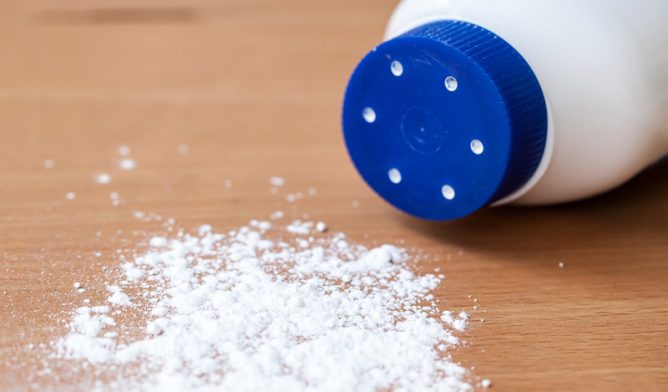Johnson & Johnson Rushed Tests of Asbestos in Baby Powder
Asbestos Exposure & BansWritten by Tim Povtak | Edited By Walter Pacheco

A new report reveals Johnson & Johnson rushed the test results of its iconic baby powder to show it was free of asbestos contamination.
The Wall Street Journal reported Sunday that two independent laboratories found no evidence of asbestos in the same recalled lot of baby powder used in the U.S Food and Drug Administration report last month.
But evidence shows the quick turnaround on the tests may have impacted results.
One of those laboratories, commissioned by J&J after the FDA report, initially found asbestos in the talc sample, but quickly recanted.
It told J&J the sample had been contaminated by the air-conditioning unit inside the testing room, according to a letter to J&J that was obtained by the Journal.
Controversy on the topic will continue.
Exposure to asbestos can lead to serious health conditions later in life, including mesothelioma, a rare cancer with no cure.
Laboratory Blames J&J for Rushing Tests
The company, RJ Lee Group from Monroeville, Pennsylvania, blamed the mistake on J&J’s urgency for test results.
The lab-testing firm had deviated from its usual testing techniques, moving the talc to a room normally used to analyze gunshot residue in criminal investigations, according to the Journal.
Follow-up tests by the laboratory showed no asbestos contamination in samples from the bottle tested by the FDA.
Bureau Veritas North America Inc., another lab-testing firm in Kennesaw, Georgia, also found no evidence of asbestos in the talc after using the same samples, according to the Journal.
The FDA testing was done by AMA Analytical Services Inc. in Lanham, Maryland, using the same electron-microscopy techniques.
The FDA, in a statement to the Journal, said that different samples from the same bottle could produce different results because the contamination might not be uniform.
A spokesman for RJ Lee Group said he was unable to explain the different results.
“You need more at bats to really determine what the batting average is for this sample,” Frank Ehrenfeld from International Asbestos Testing Laboratories in Mount Laurel, New Jersey, which was not involved in the testing, told The Wall Street Journal.
Ehrenfeld also said it would be difficult to conclude whether J&J’s talc contains asbestos because the findings have not been replicated.
Tough to Separate Naturally Occurring Minerals
The FDA has said, and most other experts agree, that talc can be contaminated by asbestos because the two naturally occurring minerals often are found in close proximity on the earth’s surface.
Talc must be sufficiently purified to avoid any cross-contamination. The FDA report found sub-trace levels, defined as no greater than 0.00002%, were found in the Johnson’s Baby Powder samples.
The controversy over asbestos-tainted talc stems from the more than 16,000 lawsuits claiming J&J’s iconic baby powder has caused ovarian cancer and mesothelioma because of asbestos contamination.
Asbestos exposure is the only proven cause of mesothelioma cancer.
A federal judge overseeing many of those lawsuits is expected to rule next month on the validity of continued, conflicting laboratory reports on asbestos-contaminated talc and their admissibility in court.
The FDA intensified its testing of various talc-based products for asbestos contamination in 2017. The testing was in response to reports of asbestos fibers being found in various talc-based cosmetic products.
The day after receiving the latest FDA report in October, J&J voluntarily recalled 33,000 bottles of its baby powder.
Many retailers reported that they pulled the product from their shelves, but only those in the 22-ounce bottles, which was where the sample was taken.
“Given the serious questions raised by the FDA’s test results, our investigation, of course, started and moved with speed and diligence,” J&J said in a statement to The Wall Street Journal. “We asked labs to work as quickly as possible to retest those samples so we could better understand what the FDA reported.”
J&J was quick to refute the FDA findings. Although the baby powder represents only a small portion (1%) of the company’s sales, it plays a much bigger role in the consumer goods giant’s reputation for quality.







